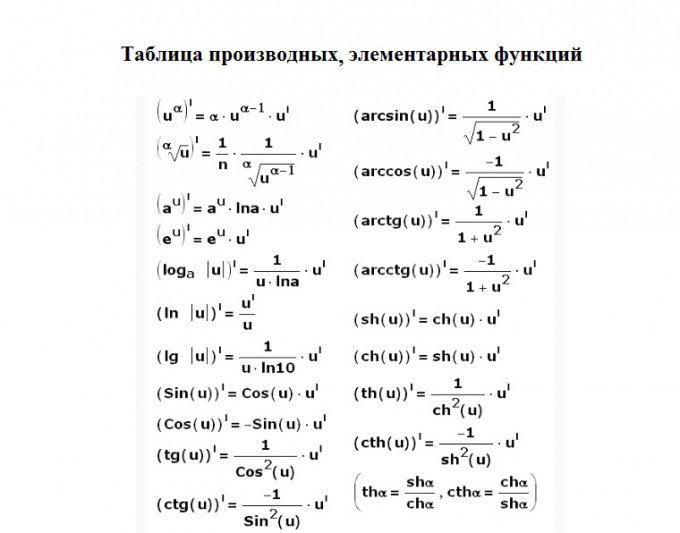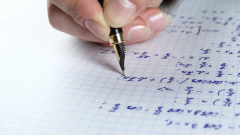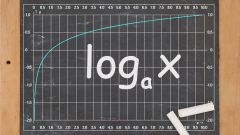You will need
- a textbook of algebra for 9 grade.
Instruction
1
The first thing you need to differentiate the functions is to know the basic table of derivatives. It can be found in any mathematical Handbook.

2
In order to solve the problems associated with finding the derivative, you need to learn the basic rules. So, let's say we have two differentiable functions u and v and some constant value C.
Then:
Derivative of constants is always equal to zero: ()' = 0;
The constant is always imposed for the sign of the derivative: (cu)' = cu';
When finding the derivative of sum of two functions, you just need them to differentiate, and the results folded: (u+v)' = u'+v';
When finding the derivative of a product of two functions, you need the derivative of the first function times the second function and add the derivative of the second function multiplied by the first function: (u*v)' = u'*v+v'*u;
In order to find the derivative from a private two functions is necessary, from the product of the derivative of the dividend, multiplied by a function of the divisor, subtract the product of the derivative of the divisor, multiplied by a function of the dividend is divided by divisor function squared. (u/v)' = (u'*v-v'*u)/v^2;
If given a complex function, then multiply the derivative of the inner function and the derivative from the outside. Let y=u(v(x)), then y'(x)=y'(u)*v'(x).
Then:
Derivative of constants is always equal to zero: ()' = 0;
The constant is always imposed for the sign of the derivative: (cu)' = cu';
When finding the derivative of sum of two functions, you just need them to differentiate, and the results folded: (u+v)' = u'+v';
When finding the derivative of a product of two functions, you need the derivative of the first function times the second function and add the derivative of the second function multiplied by the first function: (u*v)' = u'*v+v'*u;
In order to find the derivative from a private two functions is necessary, from the product of the derivative of the dividend, multiplied by a function of the divisor, subtract the product of the derivative of the divisor, multiplied by a function of the dividend is divided by divisor function squared. (u/v)' = (u'*v-v'*u)/v^2;
If given a complex function, then multiply the derivative of the inner function and the derivative from the outside. Let y=u(v(x)), then y'(x)=y'(u)*v'(x).
3
Using the above-obtained knowledge, you can differentiate almost any function. So, let's look at some examples:
y=x^4, y'=4*x^(4-1)=4*x^3;
y=2*x^3*(e^x-x^2+6), y'=2*(3*x^2*(e^x-x^2+6)+x^3*(e^x-2*x));
Also there are challenges to calculating the derivative at a point. Imagine you are given the function y=e^(x^2+6x+5), you need to find the value of the function at x=1.
1) Find the derivative function: y'=e^(x^2-6x+5)*(2*x +6).
2) Calculate the value of the function at a given point y'(1)=8*e^0=8
y=x^4, y'=4*x^(4-1)=4*x^3;
y=2*x^3*(e^x-x^2+6), y'=2*(3*x^2*(e^x-x^2+6)+x^3*(e^x-2*x));
Also there are challenges to calculating the derivative at a point. Imagine you are given the function y=e^(x^2+6x+5), you need to find the value of the function at x=1.
1) Find the derivative function: y'=e^(x^2-6x+5)*(2*x +6).
2) Calculate the value of the function at a given point y'(1)=8*e^0=8
Useful advice
Learn the table of elementary derivatives. This will significantly save time.



